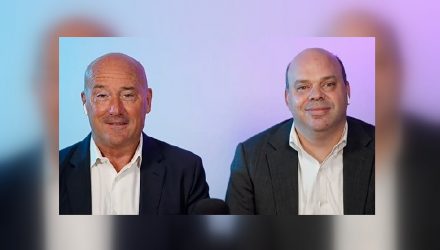With actively managed ETFs, advisors and clients are willing to pay a premium relative to investing in an index-based approach. However, they want to be rewarded. In 2023, VettaFi is seeing this occur and is eager to share more about some of these active equity ETF strategies.
On Thursday, September 21, we will be hosting a VettaFi Equity Symposium. Joining Tom Lydon and I will be portfolio managers and ETF leaders behind some strong-performing active equity ETFs. Join us and hear them answer questions about the equity market and what’s ahead.
Identifying Growth Prospects in the Large-Cap Segment
At 11 a.m., we will be hearing from Sonu Kalra, a portfolio manager at Fidelity. He runs the Fidelity Blue Chip Growth ETF (FBCG), which was up 44% year to date as of September 12. This compares favorably to the iShares Russell 1000 Growth ETF (IWF) and its 30% gain. FBCG uses the Russell 1000 Growth index as its benchmark and charges a 0.59% expense ratio that is 40 basis points more than IWF. Kalra will be part of a large-cap equity discussion with VanEck.
According to a Fidelity second-quarter review, FBCG’s strong performance was aided by its stock selection of Meta Platforms and Nvidia. But I’m eager to learn more.
Active Equity ETF Investing: Advantages Over Passive Approaches
At 11:20 a.m. on Thursday, we will be hearing from Steve Cook of Harbor Capital and Marissa Ansell of Goldman Sachs. Cook is the head of Harbor’s ETF lineup that includes the Harbor Long-Term Growers ETF (WINN). Despite WINN charging a 0.57% expense ratio, 38 basis points more than IWF, WINN too has outperformed. The active equity ETF was up 38% for the year. In its quarterly report, WINN management also cited Nvidia as a contributor and noted it had initiated a position in Beton Dickinson.
Meanwhile, Ansell is a lead client portfolio manager for Goldman Sachs’ lineup of thematic equity ETFs and was part of VettaFi’s AI Symposium. The Goldman Sachs Future Health Care Equity ETF (GDOC) is one of these. The ETF was up 1.8% for the year, in contrast to the 1.3% loss incurred by the Vanguard Health Care ETF (VHT). GDOC takes a multicap approach to find innovative and attractively valued healthcare companies. Its 0.75% fee is well above VHT’s 0.10%.
Eli Lilly and Intuitive Surgical were top contributors to GDOC’s second-quarter performance, according to a Goldman Sachs report.
Strategic Sector Allocation for Today’s Market Landscape
The Gabelli Financial Services Opportunities ETF (GABF) is another example of an actively managed sector ETF performing well. The fund was up 21%, significantly outpacing the Financial Select Sector SPDR ETF (XLF). While GABF’s 0.90% gross expense ratio is well above the 0.10% for XLF, Gabelli is currently waiving most of the fee, bringing the cost to just 0.04%.
GABF manager Mac Sykes will be joining VettaFi at 11:40 p.m. at the Equity Symposium on September 21. He will be part of a sector panel discussion with a different Fidelity speaker. The ETF’s recent top holdings included Berkshire Hathaway, which can be found heavily weighted in XLF, but also Apollo Global Management, Blackstone, and First Citizens BancShares, which are not. I’m interested to find out why.
The rest of VettaFi’s two-hour, continuing education program will include discussions about dividend, value, and small-cap index-based strategies, worthy of attention. Sign up today and you will likely walk away better prepared to invest for 2024 than you are today. A replay will also be available.
For more news, information, and strategy, visit the Equity ETF Channel.


